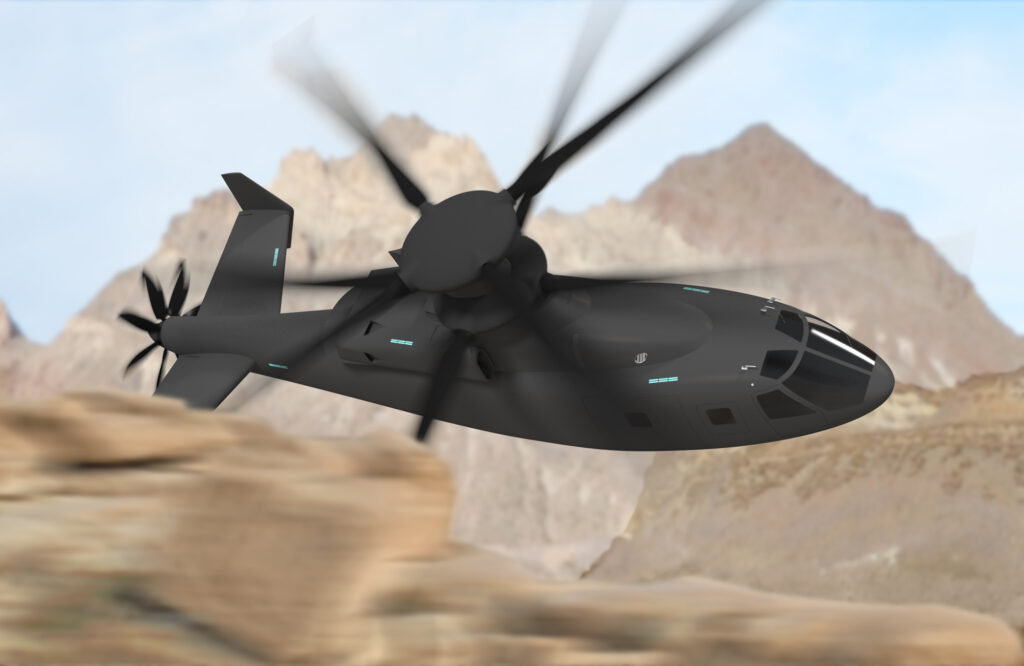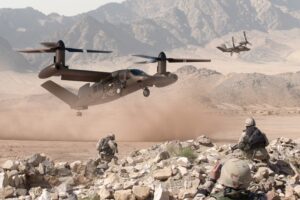Future Vertical Lift: Industry Urges Common Cockpit
Posted on

Sikorsky-Boeing SB>1 Joint Multi-Role demonstrator
WASHINGTON: The military’s Future Vertical Lift initiative aims to replace a range of aging helicopters from all four services. No, wonder, then, that FVL is evolving, not into a single acquisition program, but into (at least) five different programs. With an eye on the problems such a broad effort can generate, the head of the industry group advising the Pentagon on FVL wants to add one more program: one to produce common components — from gearboxes to entire cockpits — that all five aircraft would use.
“is there a reason why every flying machine has to have a cockpit design team?” asked Sikorsky‘s Nick Lappos, chairman of the 66-company Vertical Lift Consortium. Why not have a single team — with input from all the FVL programs — design a cockpit, or at least the flexible “fundamentals” of one, that all the aircraft use? Boeing does much the same across its airliner fleet, he noted. The Marines’ AH-1Z and UH-1Y helicopters use 80 percent common components overall.

Nick Lappos
Yes, Lappos acknowledged today at the Center for Strategic and International Studies, this could create minor inefficiencies because you couldn’t tailor components to each individual design. That’s a small price to pay for lower costs and faster development, he argued. “The ideal cockpit in one machine is not the ideal cockpit in another one,” he said, “so there are some trade-offs to be made — and some biting of the bullets by [each individual aircraft’s] program managers.”
It’s not just cockpits, Lappos said, but a host of often-overlooked components. The commonality program could provide the aircraft-specific programs with everything from bolts and generator controls to hydraulics and maintenance toolkits.
Every time you use one component across multiple aircraft, you save time and money that would have otherwise been spent reinventing the wheel. Lappos was too polite to say this, but such savings are a big plus in a Pentagon procurement system that is notorious for wasting both time and money.
Common components also reduce maintenance costs once the aircraft is in service. Maintenance at all levels– from the flight line to the depot — and fuel costs comprise “about ninety percent” of an aircraft’s Operations & Sustainment (O&S) cost across its life-cycle, said James Kelly, a Pentagon logistician who works on the F-35. Maintenance costs make up more of that 90 percent than fuel, Kelly continued, showing reams of data to the CSIS audience.
Maintenance costs, in turn, are heavily driven by the price of parts, Kelly said. If future aircraft have more parts in common and fewer unique ones, that means acquisitions officials can get bulk discounts on the parts they buy and logisticians can stock fewer different parts.
Common doesn’t mean “identical,” Lappos said: If two different parts do the same thing and require the same kind of care from maintainers, that’s a major simplification in itself. “There’s amazing payoff for commonality that’s not identical, but close enough,” he said.
Getting this kind of commonality — and designing an aircraft for affordable maintenance in general — requires making crucial decisions very early in the process. That’s why the FVL initiative is talking about this now, before formal requirements have been defined or programs launched. The industry consortium that Lappos leads is itself remarkable for getting industry input at an unprecedentedly early stage. “This is the first time we’ve been at the bakery while the bread is being considered, before it’s being baked,” he said.

Bell V-280 Valor Joint Multi-Role Demonstrator
But at this point we’re still discussing concepts — bread recipes, if you like. How do we implement commonality once FVL gives rise to actual programs?
“I’m not sure that I could tell you exactly how it’d work either,” Lappos said when I asked him. “The idea [is] that there would be a program that would produce the fundamentals for the cockpit, a program that would produce the fundamentals for the maintenance and logistics systems, [and] those programs would deliver their products down to the programs that are actually developing the air vehicles,” i.e. the aircraft. (FVL is also pursuing open software standards).
Coordinating all these different entities, “there’d be a future vertical lift program that might be at the service level or it could be at the DoD level. and that program would then have subordinate programs under it,” he said. “We believe that a nested ‘program of programs‘ might be the way to go.”
Subscribe to our newsletter
Promotions, new products and sales. Directly to your inbox.
